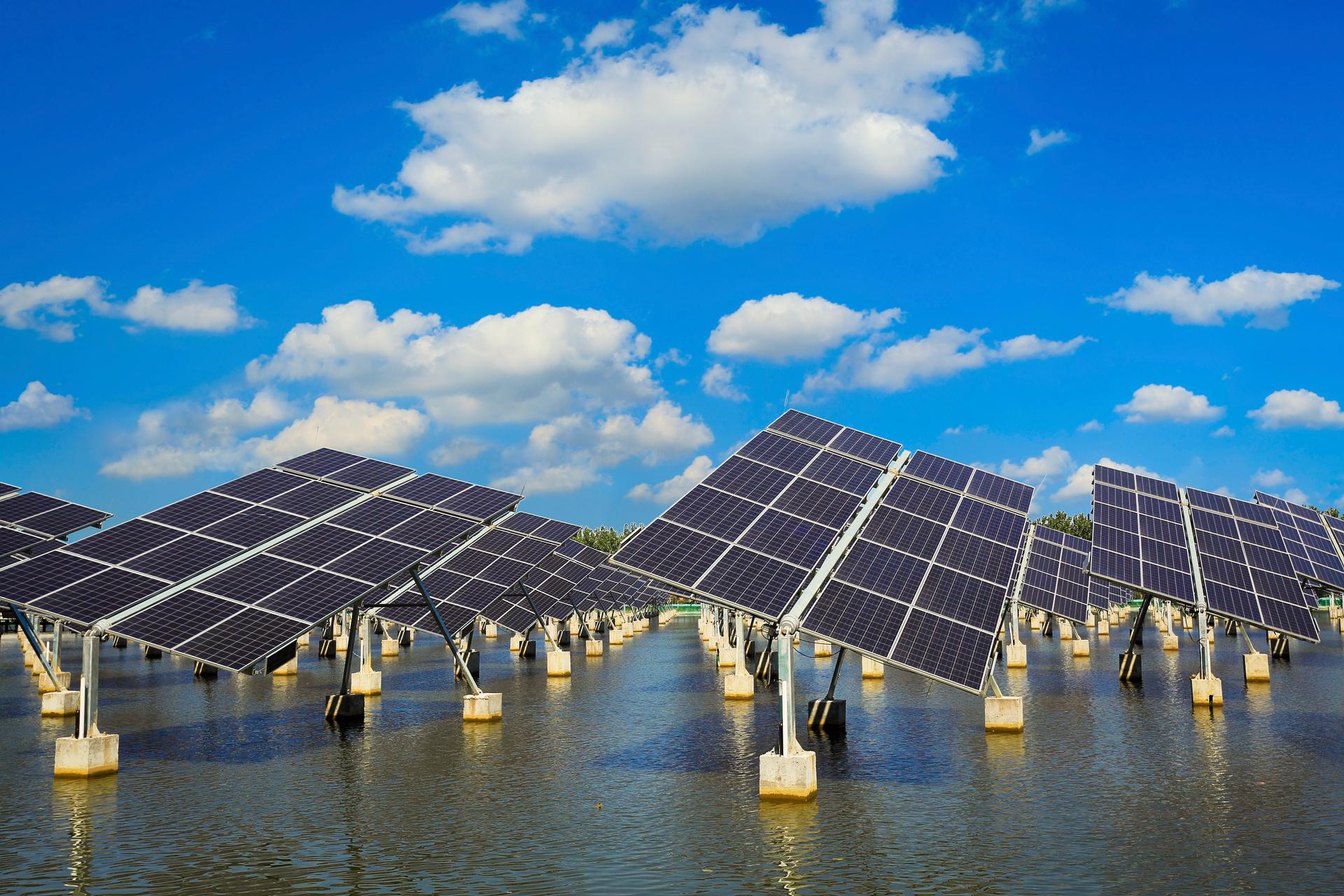Doubling renewable energy by 2030 could save the global economy trillions of dollars every year
Solar panels in the Town of Harwich, Cape Cod, Massachussets.
Doubling the world's renewable energy capacity by 2030 could save the global economy between $1.2 and $4.2 trillion each year.
That's according to a report from the International Renewable Energy Agency (IRENA). To put that figure in perspective, the entire US federal budget in 2015 was $3.8 trillion dollars.
Can doubling renewable energy capacity really save that much money? Yes, but it’s complicated, says Dolf Gielen, director of IRENA’s Innovation and Technology Center in Bonn, Germany.
Gielen says IRENA looked at both the cost of accelerating renewables deployment and the savings generated from moving away from fossil fuels. They concluded that investment in renewables would have to quadruple from around $300 billion a year today to around $1.3 trillion a year. But scaling down investments in fossil fuels and nuclear energy would reduce that total cost to about $200 billion a year in 2030.
Decreased use of fossil fuels would also generate significant savings by reducing local air pollution and its related health impacts, while also significantly reducing global greenhouse gas emissions.
“So if you quantify the benefits of these reduced emissions, you find [savings in] the range of between $1 trillion and more than $4 trillion US dollars per year,” Gielen says. “So, in fact, the benefits exceed the costs by a factor of five to 20."
The huge range in possible savings is due to the many uncertainties embedded in the calculations, Gielen says.
“To calculate the savings,” he explains, “you have to look at what the saved emissions are, so there's uncertainty there. You have to look at where the emissions from these chimneys and cars will really affect people, so there is uncertainty. And then the question is, How do you value health impact? So you have three uncertainties on top of each other. As a consequence, you end up with that range of $1 to $4 trillion. But the key point is that the savings are at least a factor of five larger than the cost. So this makes sense.”
The biggest savings — and the biggest challenges — will likely come in the energy sector, Gielen says. “Today, around 23 percent of global power generation is renewable, and we think that by 2030 that can increase to 45 percent, perhaps even more than 50 percent,” he says.
Switching to renewables for heating and cooling buildings and as a substitute for gasoline in transport and industry won’t be easy, Gielen says. Today, their share of renewables are still relatively low and they will need to move aggressively to raise it.
Wind and solar power show the potential for the most rapid growth, Gielen says. IRENA calculates an increase of five to tenfold between now and 2030. He notes, however, that those industries are starting from a relatively low share.
Biomass, on the other hand, accounts for three quarters of renewable energy use today. While he sees less growth in percentage terms than in solar and wind, Gielen still thinks that biomass can account for half of total renewable energy use by 2030 and for a significant share of absolute growth between now and 2030.
Fossil fuel subsidies remain one of the primary impediments to growth in renewables in many countries, Gielen says. Globally, subsidies for fossil fuels are roughly four times as high as subsidies for renewables. At the same time, he says, the falling costs of renewables mean that in more and more cases, renewables will become the most economic solution, even without subsidies.
In 2015, Gielen points out, renewables accounted for significantly more than half of the additions to total global power generation capacity. Solar added over 50 gigawatts — more than the total power generation capacity of Italy. Wind added 64 gigawatts. Gielen expects this trend will sustain over time and likely accelerate.
“We see growth rates of more than 20 percent a year in the application of these technologies, and we think that this growth will continue,” Gielen says.
This article is based on an interview that aired on PRI's Living on Earth with Steve Curwood.
Every day, reporters and producers at The World are hard at work bringing you human-centered news from across the globe. But we can’t do it without you. We need your support to ensure we can continue this work for another year.
Make a gift today, and you’ll help us unlock a matching gift of $67,000!
